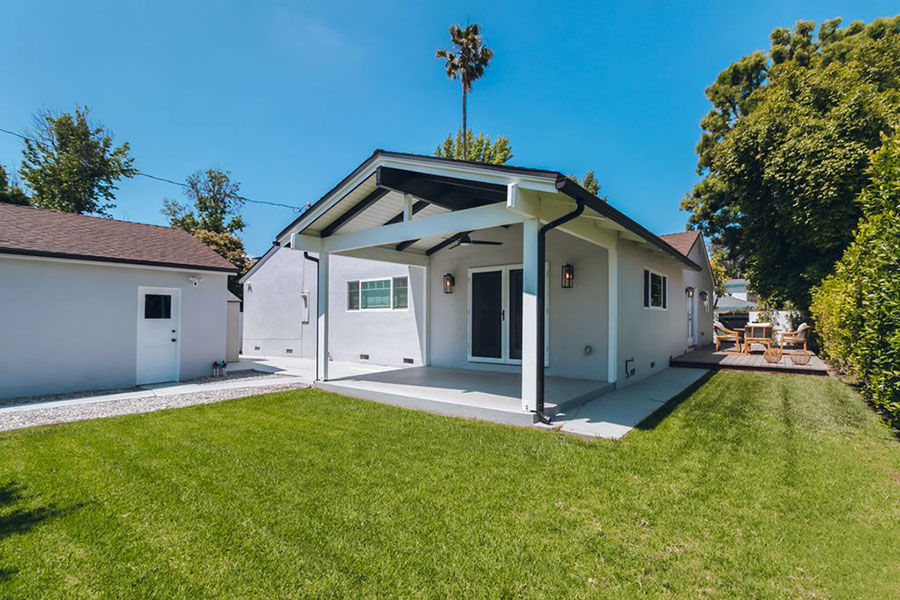As the Tiny House Movement rises, more people are considering going tiny. Earlier the two main demographics were retirees and singles, but now a family of five can stay comfortably. Parenting is a challenging job in an average-sized home, and it’s understandable when a parent winces at the thought of moving inside a 400 sq. ft. space with kids. However, this is not stopping families across the US from leaving behind traditional homes and choosing tiny living. More families are choosing to simplify their lives by cutting square footage. If you are seeking a good quality log cabin, ADU, or tiny home on foundation, research multiple builders, then you must compare the models and pricing before taking a final call. TinyHouseMe connects you with multiple builders across the US. We help you save time searching for a builder. At TinyHouseMe, you connect faster with a builder to customize the tiny home for the backyard or build a cabin on wheels. On our platform, you will find builds off-the-shelf as well as customized choices to meet specific needs.
You save money – Less financial disagreements
In the wake of the housing crisis and global recession, the tiny house movement has gained a lot of momentum. The perfect traditional house costs a fortune and is unattainable for many. With economic uncertainty, spending so much on housing isn’t worth it. Moving into a tiny house is easier as you don’t have to take a mortgage. Tiny homes are comparatively less expensive than conventional houses, and the general maintenance costs and utility bills for sewage, garbage, water, and electricity drop considerably. Additionally, since you don’t fit much stuff inside a tiny house, it reflects on your reduced expenses in the long term.
Although tiny homes are affordable, a tiny home’s determining price factor is whether you buy a prefab tiny house or go for a DIY-built one. Of course, a prefab tiny house is costlier than a DIY structure. Nevertheless, for a family, living in a tiny home means inexpensive maintenance, lower utility bills, fewer clean-ups required, more financial stability, faster debt repayment, more funds saved, and fewer arguments over money.
Homeschooling VS Traditional schooling
Homeschooling is lawful in the US. Most tiny home dwellers homeschool their kids through co-op classes, online courses, and textbooks. When you choose to homeschool your kids, you will be held responsible for the child’s education as a parent. Many freak out about the thought of being both a teacher and a parent. However, you can still live in a tiny house and choose to send your kids to school. You can get a tiny house for the backyard, build on a foundation and send your child to a traditional school. The conventional school offers many activities, and sometimes parents prefer that to homeschool. If you are living in a tiny home on wheels, make an arrangement for the child to live with either parent during the school year while they get to travel with family in the tiny home during summer.
We are not saying that homeschooling is bad, as sometimes the child gets to learn more. However, school isn’t the only way to learn new stuff. Traveling and witnessing real-life situations and challenges in a tiny home is a hands-on experience that impacts children to become well-rounded adults. Your child learns to value experiences and not just material possessions.
Kids need to downsize too!
The math goes like this: kids + toys = mess. However, in a tiny house, a little mess can look like ‘hell on earth.’ Things easily get messy inside a tiny house, and a lot of downsizing can manage the clutter. Give the kids a box to store their stuff, and anything that doesn’t fit in gets tossed out. People wrongly think kids need more space and toys than they need.
Hosting a party for tiny home dwellers
Large indoor parties inside a tiny home are an impossible dream. However, you can have a great outdoor gathering built like a wood-fired hot tub, fire pit, an outdoor dining area, and guest cabins. Yes, get guest cabins – extra tiny homes for stayover parties if you are sociable.
You don’t live remotely in a tiny house
Living in a tiny house doesn’t mean staying in a remote location. Families usually live in rural areas and clearly understand the zoning laws and building codes. There are a lot of legalities and regulations across the country about tiny homes, and forgetting about these can risk eviction. Families need to plan and prepare before moving into a tiny house. The transition gets easier when you have an established builder designing and manufacturing the customized tiny home that suits your lifestyle. TinyHouseMe connects you with hundreds of different builders across the US. You can find the perfect building and connect with the builders via TinyHouseMe for a quick response and competitive pricing.
Tiny home – Your first step toward a long-term plan
If your final goal is to live in your own ‘dream house,’ then living in a tiny home is the 1st step. The tiny home is your conscious decision to stay mortgage-free. Leading a mortgage-free life is worth the challenges and sacrifices when you have a bigger dream of building your own house. Connect with TinyHouseMe to find your perfect tiny space.






